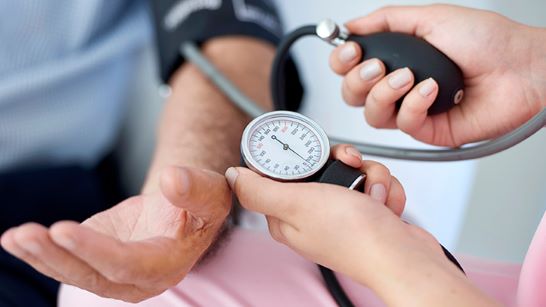If you are looking for a short answer to the question – yes, it is.[1]

If you are an older adult who is suffering from symptoms of hypertension, you need to know your blood pressure. Moreover, this is extremely important if you want to stay in proper health. Health professionals recommend getting them blood pressure checked often.
The blood pressure is meant to maintain the systolic and diastolic pressure from time to time. Knowing your blood pressure numbers will help you keep track of it and also ensure better health.[2] Moreover, in most cases, high blood pressure can be a sign of an underlying problem. Thus, you may need to get it checked from time to time for a better idea.
What is systolic blood pressure?
The heart usually pumps out blood from the arteries to other parts of the body. The force applied to pump out the blood causes pressure on the blood vessels, and this is referred to as the systolic blood pressure. The systolic blood pressure of a normal person will be 120.
However, in some cases, the person’s systolic blood pressure will also read till 129, which is considered to be normal. But, if the blood pressure increases above 129 and ranges between 130-139, it is the first stage that you need to make a note of.[3]
Often people’s blood pressure may range up to 140, which is the second stage of hypertension, but if the blood pressure increases till 180, it is a sign of an emergency, and you need to see a doctor. Calling 911 can be of great help to reach the hospital in time.
What is diastolic pressure?
The diastolic blood pressure is usually the lower level, and it is the reading when the heart rests in between after pumping out the blood. During this period, the heart gets filled with oxygen and blood.
For a normal human being, the diastolic blood pressure is around or less than 80.[4] However, in some cases, you may still be prone to hypertension if your diastolic pressure is less than 80, but systolic is more than 129.
Stages of hypertension for diastolic blood pressure
Stage 1- 80-89
Stage 2- >90
Stage 3- >=120
How often should I get my blood pressure checked?
Whether you are prone to hypertension or are doing just fine, every time you need to keep a check with their blood pressure levels.[5] Yes, hypertension can increase the risk of cardiovascular diseases, which is why you may need to visit the doctor frequently.
If you have normal blood pressure, i.e., less than 120/80, you may need to get your blood pressure checked once a year. However, it is always suggested to consult your doctor about how frequently you should get it checked.
If you have high systolic blood pressure (120-129) but normal levels of diastolic blood pressure, you will need to check the blood pressure once every 3-6 months.[6] Health professionals often advise bringing a change in diet and lifestyle to get rid of higher blood pressure levels.
People with stage 1 hypertension are recommended to bring a change in daily lifestyle. The doctor may recommend checking your blood pressure every 3-6 months with slight changes in your lifestyle. The changes in lifestyle and diet can be of great help as well. Since you will be put on medicines, you will constantly need to check your blood pressure to find the results.[7] The effect of medicines completely depends on what health conditions you are suffering from.
People with stage 2 hypertension are put on medicines as per the doctor. Similarly, changes in diet and lifestyle are necessary for fixing hypertension problems.[8]

Symptoms that you need to watch out for
You may or may not notice any symptoms even when it has reached serious high levels.
However, this does not mean that it is completely symptoms less because often people have shown the symptoms of high blood pressure such as headaches, shortness of breath, bleeding, and more. But, not everyone who is a patient will exhibit these symptoms.
When should I see a doctor?
If you are a patient of hypertension, you need to see your doctor frequently. A normal adult should as well visit the doctor regularly to get the blood pressure checked. No matter what your age is, you will need to get a blood pressure reading once every year.[9]
The doctor will further recommend changes depending on the progress. While high blood pressure is considered to be dangerous for adults, kids, too, have shown symptoms of high blood pressure.
You will not get a routined reading of the blood pressure levels if you haven’t been seeing your doctor. In the US, a free blood pressure checkup is part of the annual checkup schedule.
Can I check my blood pressure at home?
A few decades ago, you may have had to visit the doctor. Today, the answer is a resounding yes. You do not need to spend money or time to visit a doctor.
If you have high blood pressure, you need to keep a close check at your numbers. But, it surely wouldn’t be possible to visit the doctor every other day. As a result, you may prefer purchasing a blood pressure kit.
The public blood pressure machines are also available at pharmacies that may help you have an accurate reading.[10] But these public machines have their own limitations, which is why you may want to avoid it.
Although you check your blood pressure at home, an appointment with the doctor does no harm. You can make a chart of the progress in blood pressure, depending on the reports you have received from the home testing kits.[11] The doctor would check it and recommend the best solution for keeping your levels at bay.
[1] https://www.ncbi.nlm.nih.gov/books/NBK268/
[2] Wang KM, Sirich TL, Chang TI. Timing of blood pressure medications and intradialytic hypotension. Semin Dial. 2019 May;32(3):201-204. [PubMed]
[3] https://www.ncbi.nlm.nih.gov/books/NBK482189/
[4] Leal J, Morrow LM, Khurshid W, Pagano E, Feenstra T. Decision models of prediabetes populations: A systematic review. Diabetes Obes Metab. 2019 Jul;21(7):1558-1569. [PMC free article] [PubMed]
[5] Handler J. The importance of accurate blood pressure measurement. Perm J. 2009 Summer;13(3):51-4. [PMC free article] [PubMed]
[6] https://www.ncbi.nlm.nih.gov/books/NBK279251/
[7] https://www.ncbi.nlm.nih.gov/books/NBK279239/
[8] https://www.ncbi.nlm.nih.gov/books/NBK538509/
[9] Dobrin PB. Mechanical properties of arteries. Physiol Rev. 1978;58(2):397–460. doi: 10.1152/physrev.1978.58.2.397. [PubMed] [CrossRef] [Google Scholar]
[10] https://www.ncbi.nlm.nih.gov/pmc/articles/PMC6180453/
[11] Burton AC. On the physical equilibrium of small blood vessels. Am J Physiol. 1951;164:319–329. [PubMed] [Google Scholar]

